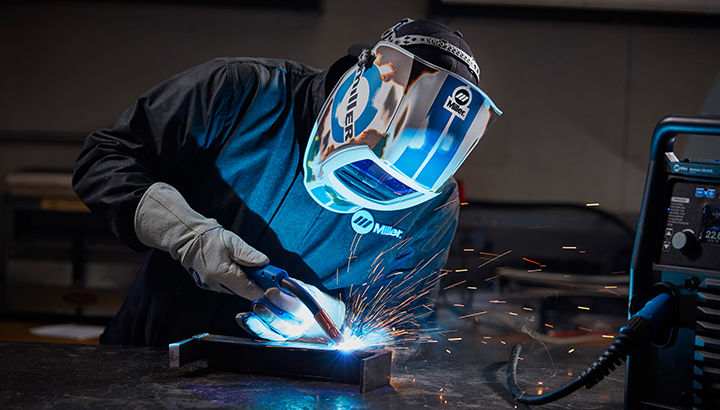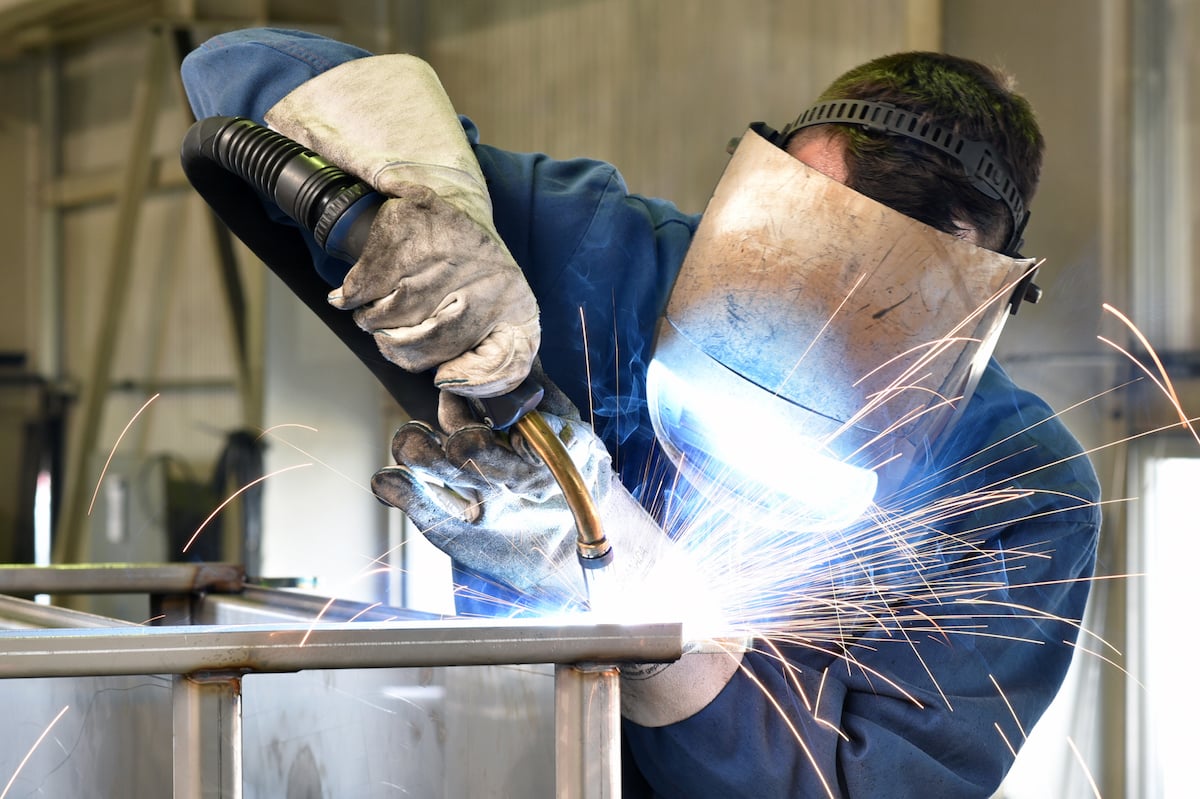Everything about Welding: Key Insights Into Techniques and Best Practices for Success
Welding includes a selection of strategies, each matched for particular products and applications. Recognizing these approaches, such as GMAW, SMAW, and TIG, is important for achieving ideal outcomes. Additionally, the appropriate devices and security methods can not be neglected. As preparation and troubleshooting play essential functions in the welding process, understanding these components can significantly improve the high quality of the last item. What are the crucial variables that assure an effective weld?
Recognizing Different Welding Strategies
Welding techniques incorporate a selection of techniques, each fit to particular applications and materials. Among the most usual strategies are Gas Steel Arc Welding (GMAW), Secured Steel Arc Welding (SMAW), and Tungsten Inert Gas Welding (TIG) GMAW, also referred to as MIG welding, is prominent for its speed and convenience, making it perfect for thin materials. SMAW, or stick welding, is preferred for its simpleness and efficiency in outside environments, particularly with thicker steels. TIG welding offers accuracy and control, making it appropriate for elaborate work and non-ferrous steels (Belgrade Fabrication). Each technique has its unique advantages and considerations, permitting welders to select the most effective approach based upon the project's requirements, product kind, and wanted end results. Recognizing these methods is crucial for successful welding
Crucial Welding Equipment and Devices
While different welding methods call for specific abilities, the right devices and devices are just as vital for attaining high quality outcomes. Necessary welding equipment consists of welding equipments, which vary depending upon the strategy-- such as MIG, TIG, or stick welding. Protective gear, consisting of aprons, handwear covers, and safety helmets, warranties security and comfort during the process. Furthermore, clamps and fixtures assist protect materials in position, making certain precision in welds. Consumables like welding poles, cord, and securing gas are likewise essential components that influence the high quality of the weld. Tools such as grinders and cutters assist in surface preparation and post-weld completing, contributing to a professional outcome. Spending in high-grade devices eventually improves the efficiency and efficiency of welding jobs.
Security Practices in Welding
Correct safety and security techniques are important in the welding sector to secure workers from possible dangers. Welders should wear suitable personal safety tools (PPE), including helmets with appropriate shading, gloves, and flame-resistant apparel. Sufficient ventilation is vital to decrease direct exposure to unsafe fumes and gases produced during the welding procedure. In addition, workers need to be trained in the right handling of welding equipment to protect against crashes. Fire security actions, such as maintaining combustible materials far from the welding location and having fire extinguishers readily offered, are needed. Routine evaluations of devices and work areas can aid determine potential dangers before they lead to mishaps. By sticking to these safety and security practices, welders can develop a much safer working environment and lessen threats connected with their trade.
Preparing Products for Welding
Preparing materials for welding is a vital action that substantially influences the high quality and honesty of the final item (Montana Mobile Welding and Repair Fabrication). Correct preparation entails cleaning the surfaces to remove pollutants such as dust, corrosion, and oil, which can endanger the weld. Methods such as grinding, sanding, or utilizing solvents are typically used to attain a tidy surface. Furthermore, guaranteeing that the products fit with each other snugly is necessary; voids can result in weak welds. It's also crucial to consider the alignment and positioning of the parts, as this will certainly impact the ease of welding and the final end result. Choosing the appropriate filler product and making sure compatibility with the base metals is necessary for accomplishing solid, long lasting welds.
Tips for Getting High-Quality Welds
Achieving high-quality welds needs attention to information and adherence to best techniques throughout the welding process. Proper joint preparation is important, guaranteeing surface areas are clean and cost-free from contaminants. Choosing the appropriate filler material and welding technique based on the base metals is critical for optimal bonding. Preserving regular travel rate and angle while welding can prevent flaws and advertise uniformity. In addition, controlling warm input is important; extreme heat can result in bending and weakened joints. On a regular basis inspecting the welds throughout the process permits instant changes if necessary. Ultimately, utilizing suitable post-weld therapies, such as cleaning and stress and anxiety relief, can improve the resilience and stability of the weld, eventually making sure a successful outcome.
Troubleshooting Usual Welding Issues
Welding often provides difficulties that can impact the top quality and stability of the end product. Typical issues such as porosity, inconsistent weld grains, and overheating can occur, each requiring particular repairing techniques. Recognizing these issues is vital for welders to enhance their abilities and achieve optimal results.
Porosity Problems Explained
Porosity can frequently be ignored, it remains a vital concern in welding that can jeopardize the integrity of an ended up item. Porosity refers to the existence of little gas pockets within the weld bead, which can lead and damage the joint to premature failing. This trouble commonly emerges from impurities, moisture, more tips here or improper securing gas coverage throughout the welding procedure. To mitigate porosity, welders must confirm that the base materials are clean and dry, use appropriate protecting gases, and preserve constant welding parameters. On a regular basis inspecting the devices and setting can also assist determine prospective problems prior to they show up in the weld. Resolving porosity efficiently is essential for achieving strong, long lasting welds that meet high quality requirements.

Inconsistent Weld Beans
Irregular weld grains can substantially impact the top quality and toughness of a completed item. Different elements add to this concern, including improper traveling speed, wrong amperage setups, and irregular electrode angles. When the welder moves too rapidly, a bead may show up slim and do not have penetration, while moving also gradually can trigger excessive accumulation. Additionally, making use of the wrong amperage can lead to either damaging or excessive spatter, both of which concession weld honesty. The welder's technique, such as inconsistent torch movement, can likewise result in irregular bead appearance. To alleviate these issues, welders must concentrate on maintaining stable, regulated motions and guaranteeing appropriate equipment settings to accomplish harmony in their welds. Uniformity is essential to accomplishing strong and reliable welds.
Getting Too Hot and Bending Issues
Excessive heat throughout the welding procedure can lead to significant overheating and deforming problems, influencing the structural stability of the work surface. These issues frequently materialize as distortion, which can endanger placement and fit-up, making more setting up challenging. Factors adding to overheating include the option of welding specifications, such as voltage and travel speed, as well as the kind of product being check bonded. To minimize these concerns, welders must keep constant traveling rate and ideal warmth input while monitoring the work surface temperature level. In addition, preheating or post-weld warmth treatment can assist minimize stress and anxieties triggered by fast air conditioning - Montana Mobile Welding and Repair Fabrication. Routine assessment and adherence to finest techniques are crucial in protecting against getting too hot and guaranteeing the longevity and dependability of bonded structures
Regularly Asked Concerns
What Are the Job Opportunities in the Welding Market?
The welding industry uses varied profession opportunities, consisting of positions as welders, designers, examiners, and instructors. Professionals can operate in manufacturing, building, aerospace, and automobile sectors, taking advantage of solid demand and affordable incomes in various duties.
Just How Can I Improve My Welding Speed Without Compromising Top Quality?
To improve welding rate without giving up top quality, one must practice effective techniques, maintain tools, optimize setups, and enhance hand-eye sychronisation. Normal training and seeking responses can also considerably add to attaining faster, premium welds.
What Qualifications Are Readily Available for Welders?
Many accreditations exist for welders, consisting of those from the American Welding Culture (AWS), the National Facility for Building Education and Research Study (NCCER), and different industry-specific companies. These qualifications enhance employability and demonstrate ability efficiency.
Just How Does Welding Affect the Characteristics of Metals?
Welding affects the properties of steels by altering their microstructure, which can result in changes in toughness, firmness, and ductility. Warm input and cooling rates during the process significantly affect these product attributes.
Can I Bonded Dissimilar Metals With Each Other?
